One of the railway’s newest acronyms is PTI (platform train interface - the place where passengers get on and off the train). The increase in the number of people using the railways has naturally led to a greater likelihood of incidents at the PTI, and it is an area that is causing concern for Office of Rail and Road Chief Inspector and Director of Railway Safety Ian Prosser.
“That is where the biggest risk now lies for passengers from a fatality or major injury point of view on the railway,” he says.
Blimey. Really? We’ve had bespoke passenger railways for 185 years now, since the opening of the Liverpool & Manchester Railway on September 15 1830 - yet in the 21st century the biggest risk is getting on and off them?
Is this not just a function of growth? More people getting on and off means that on the basic law of averages, more people are going to have slips and trips in and out of the train?
“This concern is based on the figures that we see, and the fact that some of the other areas where passengers were hurt or harmed in the past have declined. On PTI, the industry really came together in a strategic way with London Underground, train operators and Network Rail coming together to produce a strategic plan for short, medium term and long term. Over a long period of time, you can help reduce risk by getting design right in stations, so that you can improve the platform.”
So, have we seen a bigger risk of people being injured getting on and off trains?
“Well you’re always going to have more pressure when there are more people.”
That’s what I was asking - clearly not very well. Is it just that there are more people getting hurt as a proportion? In other words, it’s not that the risk is any greater, there are just more people taking it?
“It’s very important when you see growth in numbers to actually address some of the underlying issues,” Prosser replies.
What about the balance between giving people adequate warnings and going ‘OTT’ on notices and announcements about being careful on the stairs, watching your step in ‘inclement’ weather, not running on platforms, holding handrails, not taking your luggage on the escalator… is it all too much? Are we bombarding people with so many safety warnings that we’re all zoning out and not listening to any of them any more?
I can’t remember the last time I saw anyone rollerblading anywhere - so do we really need to be told half a dozen times at King’s Cross not to do it? I know Ian has a young daughter - does he have notices all over the house about holding the handrail, being careful on the stairs, and so on…?
“I do tell her not to run up the stairs.”
Great. That’s good parenting for a young child. But you won’t be telling her that when she’s in her 20s and beyond?
“I also tell her to hold the handrail which I specifically had put into the house.”
But no signs on every other stair riser… why can’t we just treat people like grown-ups? And there’s a special place in hell reserved for whoever came up with those infuriating hologram ladies at the foot of many escalators, waving their arms about and exhorting us to use the ‘elevator’ which apparently is somewhere close by. Maybe if it was more obvious, we would use it - and Prosser is quick to pick up on this.
“There are a couple of very important points here,” he says. “One is that certain messages can have a beneficial effect - but yes, you’re right, overdo it and people will zone out.
“But if you intuitively design stations, you actually have an impact unconsciously on people’s behaviour. I think it’s a real balance of some messages - but not over the top, because people will then ignore them, and where they are is particularly important. Designing these things so that people naturally do the safe thing - so put the lifts in a very obvious place so you see them first, before the escalator. They have been doing this at airports for many years.”
“That’s safety by design. We have investigated some of the issues at London Bridge, and some solutions are really simple. Take the overcrowding, which made all the newspapers and TV bulletins with people crawling under gates.
“At first, they had a single set of customer information screens over just one set of the gates. So where did everyone go? Hence the overcrowding. So one of the mitigations was to put another set of screens over the other set of gates. We need to think much more in advance about these things.”
On the profileration of signs, what about the very successful experiments that have been carried out in streets, stripping out many warning signs and even taking down railings designed to funnel people across pelican crossings? It’s worked really well - even right outside King’s Cross and St Pancras, for example. Should we not likewise de-clutter the railway?
“It’s about getting the balance right and being proportionate,” replies Prosser.
So are we being proportionate? Or have we gone too far?
“I think it’s difficult to say, to make a blanket statement that we’ve gone too far.”
Hmmm. I can’t helping thinking that he’d like to agree, but can’t. I try another tack. Is it not less about our ‘comfort and safety’ (don’t you get fed up of hearing that?) and more about their liabilities? Does management believe they’re covered if they’ve given us a warning?
“I think if you haven’t designed it well, you don’t assume.”
Double hmmmm! OK, let’s stop beating about the proverbial. I ask him outright: has it become more about arse-covering than genuine passenger safety - even if only in some instances?
“I think if you go back, every location is specific, so having generalities is not the right thing,” Prosser replies carefully. “This is where management maturity comes in. If you have strong local management, you’ll get the right solutions.
“Yes, they’re thinking about risk, and they will get the solutions that work for their station. For example, we have safe platform train interfaces at London Underground, which is slightly safer than the main line railway. And yet you would think, with all those people that close to the platform, you’d have more accidents. One of the reasons you don’t is that on LU you have excellent staff interactions with passengers.”
My point exactly! There is only one very simple warning, and everyone knows it: “Mind the Gap”. The expression is so effective, it’s entered the wider general vocabulary - journalists, for example, often tell Government to “Mind the Credibility Gap”.
So, “mind the gap” is incredibly simple. It does what it says on the tin. It’s embedded in everyone’s psyche. You say “mind the gap” and everyone knows exactly what you mean and where.
“So we’re in agreement!” says Prosser. “We’re coming back to my golden rule - proportionate, accurate, simple. On my LU platform at King’s Cross, every day is well managed and well controlled by one individual, and there are hundreds and hundreds of people that use that platform. It’s common sense, most of this.
“It’s about not making it too complicated, not over-burdening people. Simple messages. ‘Stand back as the train comes in’ - that’s all they say. Sometimes, we have to work hard to keep it simple, because as human beings we tend to over-complicate things.”
Aha! NOW we’re in agreement, I tell him! My sense is that he does really ‘get’ this point… in which case, I wish him well in going out to bat for ‘proportionate, accurate, simple’.
Apply that rule to rollerblading at King’s Cross, and the only thing that applies is the simplicity of the warning. Apply it to the ‘slippy platforms in inclement weather’ and it fails entirely on ‘simple’ - the railway is the only place anywhere these days (I think) that even uses the word ‘inclement’!
So are passenger safety trends generally heading in the right direction? Some stats seem to be heading the wrong way?
“Passenger risk does appear to have gone up slightly, but that is because the numbers have gone up,” Prosser replies. “But when you normalise the stats, risk is slightly down. Something is working, and that’s because Network Rail - in some areas - has made some really quite key improvements.
“Level crossing risk has improved, for instance. But there are problems elsewhere - we need to maintain momentum on renewals, in particular, and maintenance. NR is starting to make headway on earthworks after we had to enforce on drainage last year. They are making progress with drainage.”
Isn’t the problem there because of decades when drainage has been neglected? Civil engineers privately say that it’s the easiest thing to cut out of the budget when you need to save, because nobody notices… at least at first!
“Absolutely - and the key words there are ‘at first’,” Prosser replies with great firmness. “It’s like vegetation, where we have also seen NR make a push. These are the sort of Cinderella assets we must not forget about, because they will come back to bite us. Poor drainage has a major impact on track geometry and embankment stability - and the safety risks there are very obvious.”
Good point, and a worrying one. We have seen the landslip at Harbury this year (RAIL 768). There was the West Highland landslip in June 2012, when a Class 66 freight train careered down a hillside and very nearly ended up in Loch Treig (RAIL 700, 701). That could have been the Caledonian Sleeper train. And there was an embankment collapse at Loughborough, under a freight train that divided and rolled down the bank - that could easily have been an East Midlands Train passenger train. In an era of climate change and much more severe weather, are we heading for a fall here?
Prosser does not disagree. “We have had some incidents, and this was why we enforced on drainage, and why we’ve enforced on Network Rail in previous years on civil structures and earthworks. And it has since made some really important progress.
“Network Rail MUST continue to better understand its embankments. It has a much better understanding of embankments now, but it needs to follow through with work on civil structures. NR believed it had a good central plan for drainage, but when we went out to the roots we found weaknesses. The plan wasn’t being implemented well - so we took enforcement action.
“That’s why we at ORR have to be on the ball, because if we think NR is not where it should be, we have to act quickly. That’s why it’s important, as a regulator, that we should not be afraid of using our enforcement tools.”
When Tom Winsor was Rail Regulator, his complaints about asset knowledge were a common refrain of his time in office. Are we finally making progress at a rate you’re happy with?
“I think NR is going in the right direction, but we’d always like it to go faster. That’s why we demanded in the Periodic Review that the regulatory outputs around asset management capability should be prioritised. This was the first time the regulator had done that, and it was because we are now a joined-up regulator and we did not make NR’s progress to be entirely output-based.
“At the same time, we do need to be careful that we don’t overload NR in terms of initiatives. We have to make sure NR is prioritised on the right things.”
You mentioned level crossings?
“It’s an improving picture in terms of understanding the risks at level crossings. Managers that NR put in place, after some enforcement from us, have been a very positive development.
“It’s about ownership of the problem, rather than it being shared by signalling, maintenance, ops and so on. What you have now is ownership, and so people will get a much better understanding of the way in which these crossings are used and the associated risks.
“One area for the industry to worry about is the passive crossings, which have no warnings at all beyond the old ‘stop, look and listen’ signs, because this is where we’re seeing most of the tragic fatalities. It’s an area where some simple technology - active warnings - would help.”
Personally, I think there’s a discussion to be had here, around our previous chat about a proliferation of warnings. After all, “stop, look and listen” is as simple as “mind the gap”.
I would apply Prosser’s own thinking here: one size does not fit all. If a passive crossing has long, highly visible approaches for trains, surely ‘stop, look and listen’ should suffice? We’re expected to look out for cars and lorries before stepping into the road. Why not apply the same thinking?
Maybe there are exceptions, where there are curved approaches to crossings. But blanket application of pee wee-style audible warnings to all passive crossings does not seem right to me.
I tell Prosser about the current farcical NR management of the passive foot crossing at Gainsborough Central, where there are only three trains a week, Saturdays only. NR is planning to replace the footbridge (which probably only needs shot blasting and painting anyway), but is not adding ramps. It is also planning to remove the passive foot crossing (RAIL 777, 779).
The upshot will be that the small but rapidly growing Cleethorpes holiday traffic will be choked off, because most of it is families with buggies.
NR’s answer, in a recent letter to Fraser Pithie, who complained about this ludicrous situation, was that the bridge would be replaced as planned; there would be no ramps; the crossing was coming out; and that Northern would have to send passengers wishing to move between platforms on a 40-minute, 20-mile taxi journey!
You really couldn’t make it up. I tell Prosser my instinct is that this is more about NR notching up crossing closures, and that it seems to care little that in reducing its own perceived risk, it is ignoring the significantly increased risk to which passengers are being exposed by being transferred to road (where more than 3,000 people a year are killed).
To his credit, Prosser is aware of the Gainsborough situation, and says he is looking into it, intends to get to the bottom of it, and then talk to NR. I get the feeling that beneath the polite and careful answer, he shares my disquiet at this silly and perverse situation.
It also strikes me that if NR put in a properly risk-assessed and equipped foot crossing at Gainsborough Central, you could save hundreds of thousands of pounds - you could then close the bridge and offer it to the heritage railway sector.
Why spend £500,000 on a bridge, when a perfectly appropriate crossing would cost maybe tens of thousands? What does this say about NR’s asset management out on the network? How much money is being needlessly spent to create a less usable, less busy railway? Should NR be allowed to make the railway less easy to use like this - at the same time as increasing Northern’s costs in such a ludicrous manner?
“The important thing is to come back to what we’re trying to achieve,” Prosser replies. “What we’re trying to achieve with a whole range of things, including closures, is only part of it. Yes, we want to reduce risk to members of the public when crossing the railway. We’re trying to reduce harm to people.”
Even if it means putting them on a 20-mile, 40-minute taxi ride where they are at much greater risk of harm? Does reducing harm to passengers only count as long as the risk is palmed off elsewhere?
“No! Absolutely not!” he insists. “What it means is NR making sensible, risk-based decisions about either the removal of a crossing or improving the technology of the crossing, improving the warnings for people… in other words, improving the ability of people to use that crossing.
“One project, which should hopefully start to be rolled out soon, is research on signage at crossings. It has become too cluttered - we need to define the minimum but most powerful signage you can give people at crossings.
“This is very good research done through the Rail Safety and Standards Board. We’re just going through the approvals process before rolling it out. It’s a whole plethora of things, and education comes into it.
“I always talk about three Es with level crossings. It’s enforcement, which is helping on the red light enforcement as well as with NR. It’s also about educating people. And there is engineering, too - but engineering is a whole different set of things. Yet again, it comes back to this management maturity.”
So in instances such as Gainsborough Central, shouldn’t it just be closure at all costs and get rid of it?
“Correct. Closure is a very important option, of course, because it has other benefits for the railway. For example, we have real issues with level crossings having an impact on the capability of the railway.
A good example is the Great Eastern Main Line from Liverpool Street to Norwich. Also crossings on the East Coast line, which not only affect performance on the railway, but which could also have a very major impact on people trying to use them either on foot or in cars. It’s all about management maturity and managing down risk in a proportionate way.”
What about workforce safety? We have sadly seen fatalities here in recent years, and NR Chief Executive Mark Carne has been especially critical of his own organisation in this respect. Is this a matter of culture - or company process?
“It’s a mixture of both,” Prosser replies. “There are two aspects: infrastructure and construction work on the main line railway is our biggest concern, but also electrical safety. We’ve seen fatalities that have been avoidable. A major cause has been culture, where risks have been taken with some of these processes.
“NR is slowly bringing in a new set of processes that are simpler and which mean more effective planning. In some cases, a Controller of Site Safety would be given a safe system of work to operate that he hadn’t even been involved in producing. We must get the people doing the work to plan the work. We need to see one person in charge.
“In the past, there have been cases where there is one Controller of Site Safety who is there to protect and control the safety of the workforce from trains, but in addition there’s an engineering supervisor to control work safety.
“That’s not, in my book, the right way of doing it. You need one person, and it’s now happening - we are seeing one person in charge of not just the work, but also the safety of the people. You thereby create accountability back, with management maturity at ground level, with systems and processes that are straightforward and easy to use. People then don’t circumvent them and make up their own site systems at work.
“It’s very important that the process is straightforward and easy to use. Then we drive cultural change, and that too is now starting to happen. Network Rail culture is now, finally, starting to change.
“It was only five years ago, Nigel, that you and I talked about the culture of fear at NR - so we’re on a journey. And that journey needs to continue. Mark Carne has certainly been given a strong message from us that this journey must continue. Yes, there are cultural issues that still need to be worked through, but it will take time. It also takes perseverance.”
Are you happy that workforce safety is going in the right direction?
“It’s going in the right direction, but not fast enough - not fast enough at all for me.”
There have also been concerns about variable safety standards among contractors used by NR?
“I’ve been quite clear on my views on contractors in relation to doing safety-critical work,” Prosser replies, in a deadpan tone that leaves no doubt as to his distaste for what’s been happening here.
He goes on: “NR has now changed its contractual arrangements, and is now moving towards all its safety-critical staff either being employed by them or their principal contractors, on proper contracts.
“That is very important, because all the research I’ve seen says that to drive a strong health and safety culture, you need the key leaders on your own payroll. A CoSS or an engineering supervisor are leaders - and it’s so important. This is why I pushed Network Rail to do this - it now has it in place, and we’re starting to see the changeover.
“It’s very important because these leaders directly drive and shape both behaviour and attitudes on the ground. We’ve seen terrible examples which we’re still investigating, where we have instigated prosecutions.
“We’re also looking at another example where an individual was killed, where there were issues with performance by contractors, and the fact that there had been an individual with known examples of unsafe behaviour who was still in a leadership role. That’s the worst thing that can happen, because it drives the wrong sort of behaviour that the guys on the front end think is the norm. Leadership right through NR needs to be really joined up.”
I have one last subject to discuss - the Signal Passed At Danger (SPAD) by a West Coast Railways steam excursion at Wootton Bassett on March 7, a potentially catastrophic incident that has been extensively reported in RAIL.
I know Prosser can’t say much about this specific incident, given the possibility of legal proceedings against both West Coast and the driver involved. My questions are therefore very simple and very general - and they come from a position of my wishing steam to continue on the main lines, but under much more professional management and train operating control than was the case at Wootton Bassett.
Given that Mk 1 stock was banned from everyday passenger use well over a decade ago, has the time now come to review their use for charter trains, given that the West Coast incident at Wootton Bassett was a heartbeat away from a spectacular, fatal catastrophe?
“That is a very good question which we are asking, too. But it’s one that I’m not going to answer directly today. We will have to stand back as a regulator, and look and talk with the industry about where we go from here. It’s a very good point. This instance has taught us a few things - specifically about pockets of culture that still exist… this old culture. It’s also taught us about thinking through what might have been. We have a lot of deep thinking to do.”
That’s the coaches… what about the traction? Does ORR think it right that in 2015 steam should continue operating on 125mph main lines?
“That’s another very good question,” he deadpans. “I’m not going to give you an answer today, but it’s something that I’ve actually asked my team to look at and talk to the industry about.”
So the presence - or otherwise - of steam on 125mph lines is being discussed?
“It’s definitely on the agenda. Especially as we’re in a very different place than we were ten years ago. So that’s why it’s a very good question, and something that I’ve asked my team to address and think through with the industry.”
- This feature was published in RAIL 782 (September 2 - 16 2015)

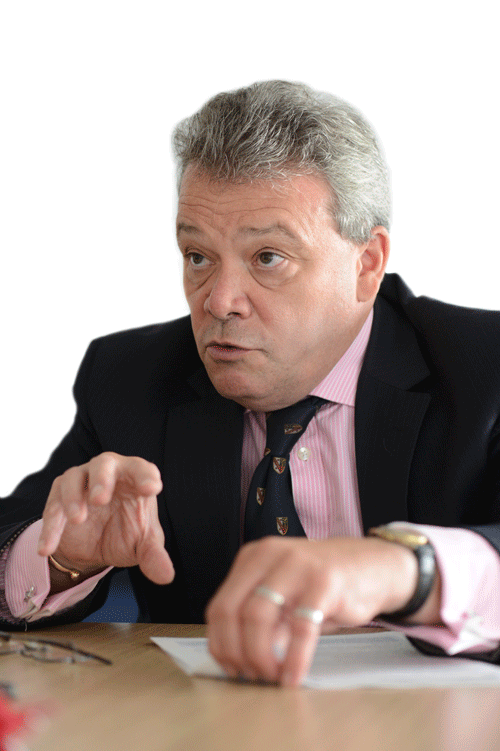
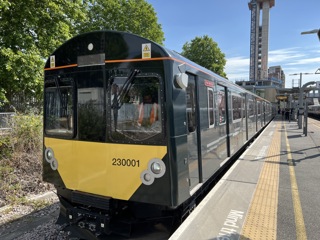
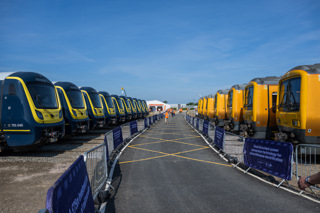
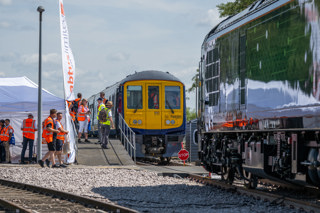

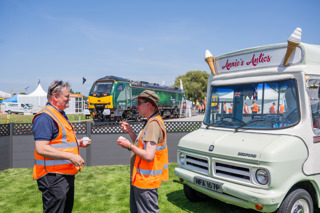











Login to comment
Comments
No comments have been made yet.